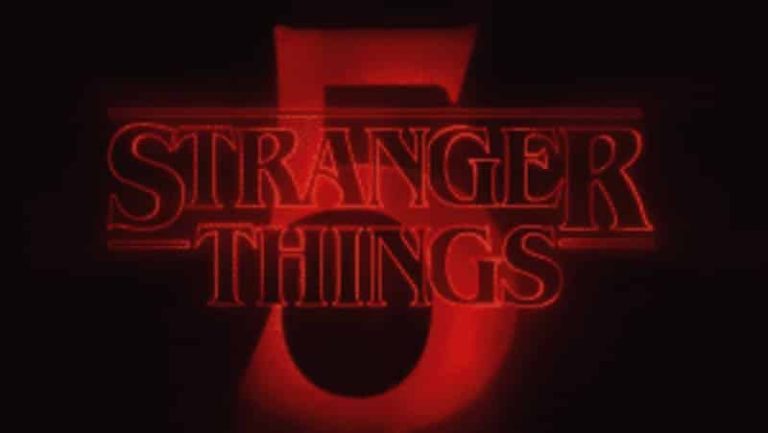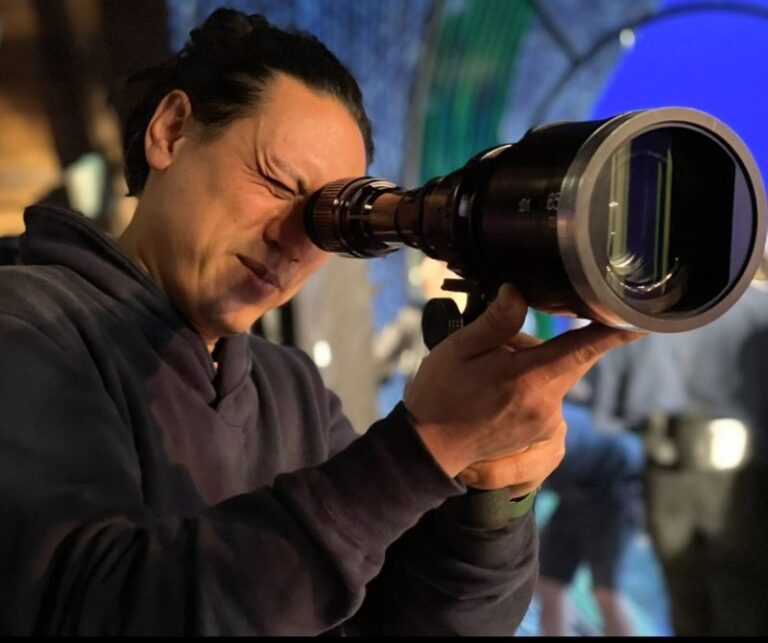The Sopranos: A Definitive History of the Groundbreaking Show, 25 Years Later
In the late 1990s, Home Box Office began producing long-form, high-quality dramatic series that would change the dynamic of television for years to come. One of the first among these groundbreaking series was The Sopranos, considered by many to be one of the greatest and most influential television series of all time. Many critics and entertainment writers have credited The Sopranos with ushering in the Second Golden Age of Television.
While The Sopranos wasn’t HBO’s first foray into a long-form, narrative series, its immense popularity and cultural influence permanently altered the TV landscape. In this modern age of streaming and binge-watching, it’s easy to forget that HBO’s epic series of the late 1990s and early 2000s most likely started it all.
Oz, another HBO success, preceded The Sopranos by two years and ran for six seasons (1997 to 2003). While Oz was still very popular, its graphic depictions of prison life didn’t resonate with as wide an audience as The Sopranos. The Wire (2002-2008) was another tremendous show from HBO that also helped shape modern TV’s landscape.
‘The Sopranos‘ Premise and Basis in Fact
https://gty.im/808181
The Sopranos follows an Italian-American Mafia boss of a New Jersey crime family, which is a subsidiary of one of New York’s five Mafia families. The story is based in part on mob families that show creator David Chase remembered from his childhood in New Jersey. They included the Richard Boiardo family and the DeCavalcante family.
Ruggiero (Richard) “The Boot” Boiardo was a prominent mob figure in New Jersey throughout the middle of the 20th century. His crime family was originally a part of the Luciano crime family, one of the original “five families” and “commission” created by Charles “Lucky” Luciano in the early 1930s. The Luciano crime family later became the notorious Genovese crime family.
Ruggiero’s son, Anthony “Tony Boy” Boairdo, followed his father into organized crime and ran the family with his father until his death. He suffered a heart attack during court proceedings in 1978. His father, “The Boot,” outlived his son by six years, dying at age 93 in 1984. While the series of events isn’t exact, it’s easy to identify the similarities to The Sopranos.
Along with the Richard Boiardo family, Chase based parts of the series on events surrounding the DeCavalcante crime family. They are an active crime family in northern New Jersey with close affiliations to the Gambino and Philadelphia crime families, among others. The DeCavalcante family is considered by many to be the “Sixth Family” of organized crime in the United States.
Chase, having grown up in North Jersey during the heyday of these organizations in the 1950s and 1960s, was greatly influenced by his experiences as a child. Chase himself is Italian-American, with his paternal grandmother changing the family name from “DeCesare” to “Chase” long before his birth.
Creating ‘The Sopranos’
https://gty.im/153620541
Chase was a moderately successful writer, director, and producer in the 1970s and 1980s. He worked on shows like The Rockford Files and Alfred Hitchcock Presents before landing the coveted job of showrunner for Northern Exposure in the mid-1990s.
Chase developed the idea of a North Jersey gangster who is forced to seek help from a psychiatrist after suffering debilitating panic attacks. He based much of the main character on himself and his own experiences. Chase had long struggled with anxiety and depression. He based the character of Tony’s mother, Livia, on his own mother and their toxic relationship.
Chase has credited Tennessee Williams and Arthur Miller as literary influences for the show, and Federico Fellini as a major influence on the cinematography. There are multiple winks and nods to these influences throughout the show.
The Sopranos was originally intended to be a feature film. But Chase was convinced by his manager, Lloyd Braun, to market it as a television series. In 1995, Chase sold the idea to Brillstein-Grey Entertainment as a series, and he wrote the pilot script shortly thereafter.
After multiple failed pitches to major networks, including a near-miss with Fox, Chase met with Chris Albrecht, then-President of HBO Original Programming. Albrecht agreed to finance the pilot episode, and Chase directed it himself. After a few months on the backburner, The Sopranos was greenlit for 13 episodes in December 1997.
Casting Tony Soprano
https://gty.im/106327088
James Gandolfini had been working in theater and film since 1983, playing on Broadway in A Streetcar Named Desire and On the Waterfront. One of Gandolfini’s first major film roles was as Virgil, a vicious mob enforcer, in the 1993 cult classic True Romance. It was this small role that caught the attention of casting director Susan Fitzgerald in 1998, when casting for The Sopranos began.
Gandolfini went on to have supporting roles in other films in the mid-90s, including Terminal Velocity, Get Shorty, Crimson Tide, and The Juror. While some of these films did better at the box office than others, Gandolfini’s roles were generally met with critical acclaim.
Gandolfini ultimately won the role of Tony Soprano over other actors, including Michael Rispoli and Steven Van Zandt. Rispoli went on to play Jackie Aprile early in the series, and Van Zandt played consigliere Silvio Dante for the show’s duration. Chase later shared that Gandolfini had walked out in the middle of the audition before finishing it later on video, confessing that he “hadn’t prepared correctly.”
Supporting Cast of ‘The Sopranos’
https://gty.im/1352247432
One of the most entertaining aspects of The Sopranos has always been the supporting cast. While most of the cast, including Gandolfini, were relative unknowns, Martin Scorcese fans can pick out a whopping 27 Sopranos cast members who also had roles in the 1990 film classic Goodfellas.
Among Sopranos actors that had roles in Goodfellas are three leading cast members who remained for the show’s duration. Lorraine Bracco, who played Karen Hill in Goodfellas, plays Tony’s therapist Jennifer Melfi. Bracco had been a major fashion model in Paris in the 1970s. She had acted in a few smaller productions before receiving her big break in Goodfellas.
Bracco originally auditioned for and was offered the role of Carmela Soprano, Tony’s wife. But she wanted a role that would be more challenging. After playing a mob wife in Goodfellas, Bracco wanted to get outside of her comfort zone and decided to play Melfi instead. Bracco’s cool, professional demeanor as Melfi is a stark contrast to the volatile personalities that surround her.
Michael Imperioli, who played Spider in Goodfellas, plays Tony’s nephew, Christopher Moltisanti. Imperioli moved to New York City at just 17 to pursue acting. He took acting classes and did odd jobs before also getting his big break in Goodfellas. Imperioli went on to have minor roles in numerous other films, including Jungle Fever, Bad Boys, and The Basketball Diaries, before auditioning for The Sopranos in 1998.
Imperioli later said that Chase had a “poker face” and kept giving him notes, making Imperioli think that he “wasn’t doing it right”. Chase later indicated that he had specifically wanted Imperioli for the role of Chris Moltisanti after seeing him in Goodfellas. Imperioli’s character was one of the most integral and complex of all the supporting cast, carrying on until the final season.
Tony Sirico had a small part in Goodfellas as Tony Stacks, then ended up stealing every scene as Paulie “Walnuts” Gaultieri. Sirico’s Brooklyn upbringing and checkered past added tremendous authenticity and insight into the mind of a gangster. His understated humor was another great addition.
Edie Falco, who played Tony’s wife, Carmela Soprano, got her start in New York in the late 1980s. She had small roles in shows like Law and Order and Homicide: Life on the Street. That was before landing a role in Woody Allen’s Bullets Over Broadway, along with roles in Trust and Copland. Falco also worked extensively on Broadway to much critical acclaim.
Falco’s first major role was as correctional officer Diane Whittlesley on Oz. Falco was cast as Carmela in 1998 and played both roles simultaneously until Oz ended in 2003. Her raw, emotional portrayal of a wife at her wits’ end is remarkable. She has the awards to prove it. Falco earned a Primetime Emmy Award, two Golden Globes, and seven Screen Actors Guild awards for her stellar performance.
Van Zandt was invited to audition for The Sopranos after Chase saw his induction speech for The Rascals into the Rock and Roll Hall of Fame in 1997. Van Zandt wasn’t an actor; he was the longtime lead guitarist for Bruce Springsteen’s E Street Band, who just happened to speak and act like a gangster straight out of central casting.
Chase fell in love with Van Zandt’s exaggerated demeanor and dialect. He invited him to audition for The Sopranos. After Van Zandt auditioned for the role of Tony, Chase wrote a character especially for him, Silvio. Silvio was Tony’s consigliere and appeared in nearly every episode. Van Zandt’s often overplayed Italian mannerisms and not-so-subtle jokes added even more comic relief.
Nancy Marchand, who played Tony’s mother, Livia, was an established theater and film actor with a career spanning nearly half a century. She debuted on Broadway in 1951 and went on to star in countless plays, shows, and films. Her most recognizable role before The Sopranos was as newspaper publisher Margaret Pynchon on the 70s drama Lou Grant, for which she won four Primetime Emmy Awards.
Her role as the passive-aggressive, toxic mother who wields guilt like a machete was one of the series’ most powerful performances. She is the chess master of the family in many ways, manipulating the family pieces as she sees fit. The underlying message that emerges is that even while surrounded by murderous criminals, Livia Soprano is the most evil one of all.
Marchand died during the show’s production after a long battle with lung cancer and COPD. In order to maintain continuity, Chase and HBO used a then-advanced technique to splice archival footage of her into multiple scenes after her death. While not as impressive by modern CGI standards, it was cutting edge at the time.
Dominic Chianese, who played Junior Soprano, was also a seasoned actor when cast. Chianese most famously played Johnny Ola in The Godfather Part II, working with Al Pacino again in Dog Day Afternoon in 1975. Chianese is also an established tenor singer, and his singing is featured in multiple episodes.
Chianese did a fantastic job of playing conflicted Junior, torn between his own ambition, love for family, and the machinations of Livia. Livia manipulates Junior for her own sinister purposes again and again. Chianese masterfully conveys the conflict and confusion of a man questioning his own motives.
Later seasons of The Sopranos incorporated a variety of better-known actors, including Steve Buscemi, Joe Pantoliano, Robert Loggia, Annabella Sciorra, and movie director Peter Bogdanovich. There were also numerous cameos featuring Lauren Bacall, Annette Benning, John Favreau, and Ben Kingsley, to name just a few.
Locations for ‘The Sopranos’
https://gty.im/170943920
Another element that set The Sopranos apart from most other series were authentic shooting locations. While most interior scenes were shot at Silvercup Studios in New York City, Chase incorporated a number of real-life and, in some cases, operating businesses in North Jersey to add more depth and authenticity.
The Soprano family home is a residence located in North Caldwell, New Jersey. It was used for all exterior scenes around the property as well as for numerous interior scenes. Over the course of the series, the house and pool behind it play key roles in revealing the root causes of Tony’s anxiety and depression.
The butcher shop was also a key location, with countless exterior scenes being filmed in front of the store as well as inside. Chase used an operating butchery, Centanni’s Meat Market in Elizabeth, New Jersey, in the pilot episode. For the remainder of the series, a building was leased in Kearney, New Jersey, and transformed into the now-iconic Satriale’s Pork Store.
Satriale’s also plays its role as the perennial meeting place for the crew, along with more gruesome purposes. The origin story of how the Soprano family came to control Satriale’s also plays a role in Tony coming to understand the brutality of his own father. Along with that, it plays a role in helping to understand the sick pleasure his mother seemed to glean from the spoils of that brutality.
The Bada Bing! is another key location that launches multiple storylines. The location is an operating gentlemen’s club on Route 17 in Lodi, New Jersey, called Satin Dolls. Both the exterior and interior of Satin Dolls were used to represent the Bada Bing!. HBO producers came to an agreement with the club owner to use it for filming The Sopranos while it was operating.
Most exterior shots of the “Bing” are during daylight hours. The interior scenes could be shot at any time since there are no windows inside the club. The back office scenes in the Bada Bing!, where so many meetings and humorous interactions occurred, were shot on a soundstage. Satin Dolls’ owner was happy to accommodate The Sopranos for all six seasons “as long as it didn’t interfere with business.”
Notable Episodes
Image Capture by Andrew LazzaraThroughout the show, numerous episodes received specific acclaim for their excellence. Many others are fan favorites for various reasons, be it humor, major plot twists, or surreal sequences where Chase’s filmmaking influences come through.
‘College’ – Season 1, Episode 5
In this episode, Tony and his daughter, Meadow, played by Jamie-Lynn Sigler, take a road trip to Maine. They went looking at potential colleges for Meadow to attend. During the drive, Meadow asks Tony if he is”in the Mafia.” He realizes that his charade of being a legitimate businessman is no longer working with his daughter. Tony explains that he is involved in some things that are “outside the law,” such as bookmaking and illegal lending.
Tony plays these things down as “victimless crimes” and this seems to satisfy Meadow to some degree. Later in the episode, Tony spots a former associate who went into witness protection after testifying against the family. Tony sneaks away, leaving his underage daughter at a bar, and viciously murders the “rat.” Upon his return, Meadow is suspicious of his explanation for his sudden exit.
This is the first time that the audience witnesses Tony’s animalistic rage and brutality. Any illusions of him being a “lovable gangster” are dispelled.
‘Commendatori’ – Season 2, Episode 4
Tony, Christopher, and Paulie travel to Naples, Italy to meet with a local Mafia family. They go there to negotiate the structure of a deal to smuggle stolen luxury vehicles into Europe. Tony and his associates are initially thrilled to be in their native country. Tony is especially excited because his ancestors are from Avellino, just outside of Naples. However, Paulie’s constant greetings of “Commendatori!” are met with confused, suspicious looks from the locals.
The crew is surprised to learn that the Naples family, to whom Tony is distantly related, is being run by a woman. The “Godfather” of the Naples family is aged and senile, and his daughter has become the defacto boss. They soon learn that she is extremely capable, however, and Tony is quite taken with her. This episode also introduces Fiurio Giunta, who will become a fixture in later seasons.
Most of the episode was actually shot in Naples. The fact that Chase went to such great lengths for one episode is noteworthy in itself. Also, this episode brings to light Christopher’s issues with drugs as he spends most of his time in Naples in a dark room, high on heroin.
‘Mr. Ruggerio’s Neighborhood’ – Season 3, Episode 1
First and foremost, this episode title is a nod to Angelo Ruggerio, who was a member of the Gambino crime family. Ruggerio’s home was bugged by the FBI. The resulting intelligence from these bugs led to vast amounts of incriminating evidence about John Gotti and the Gambino family operations.
The episode centers around the FBI’s attempts to bug Tony’s home using a lamp in his basement. It’s the only place in his home where Tony would discuss business. The episode is fast-paced and, at some points, frenetic. This happens with the FBI keeping tabs on Tony, Carmela, and their children as they wait for a time window to plant the bug when the house is empty.
The FBI code names for the house and family are also quite amusing. The family home is referred to as “The Sausage Factory.” Tony and his family are referred to as “Papa Bing,” “Mrs. Bing,” “Princess Bing,” and “Baby Bing.” The Peter Gunn theme is used throughout the episode to humorously convey the FBI’s “clandestine” efforts.
‘Pine Barrens’ – Season 3, Episode 11
Pine Barrens is one of the most entertaining episodes. Tony tasks Paulie and Christopher to collect a debt from a Russian associate named Valery. The two go to Valery’s apartment and an argument ensues. This leads to Paulie and Christopher beating the man unconscious. Believing he is dead, they put him in the trunk of their car to transport “the body” to the pine barrens of New Jersey for disposal.
When they arrive in the pine barrens and open the trunk, Valery rushes out, clobbers Chris with a shovel, and runs away through the snowy woods, barefoot and dressed only in pajamas. Paulie and Christopher give chase and shoot Valery, but he still gets away. Christopher and Paulie then get lost in the woods, finding themselves ill prepared for a night in the elements. They find an abandoned van and sleep there, surviving on ketchup packets.
The following day, Tony calls Paulie but the phone signal is spotty. Tony proceeds to tell Paulie that Valery is a former Russian commando who had worked for the Interior Ministry and killed 16 Chechen rebels single handedly.
The bad cell reception and Paulie’s ignorance lead to a hilarious misinterpretation reminiscent of the “telephone game.” Paulie tells Christopher, “You’re not gonna believe this. He killed 16 Czechoslovakians. The guy was an interior decorator.” Christopher’s response to this bizarre revelation is even funnier: “His house looked like shit.”
Valery is never seen again, though some camera angles during the Pine Barrens scenes suggested that he was watching Paulie and Chris from a distance. The fact that Valery was never seen again has been an ongoing mystery for fans, with Chase offering little in later interviews as to the fate of the “Russian Rambo.”
‘Whoever Did This’ – Season 4, Episode 11
There are multiple major plot twists and crescendos in this episode. Firstly, Junior suffers a concussion after falling down the courthouse stairs. He’s there because he’s facing RICO charges. Junior is hospitalized and enjoys the respite that his condition offers. Tony suggests that he “play up” his cognitive decline when returning to court to win sympathy from the jury. Ironically, Junior begins exhibiting signs of actual cognitive decline. These events set up a story arc that will continue until the series finale.
This episode also sees the end of Ralphie Cifaretto, played by Joe Pantoliano. Ralphie’s 12-year-old son Justin is critically injured by an arrow while playing with a friend. Ralphie is clearly devastated. Tony and the rest of the family come to Ralphie’s aid, except for Paulie, who suspects Ralph of obscenely prank-calling his mother.
A short time later, the stables that house Ralphie’s racehorse, Pie-O-My, burn to the ground, killing Ralph’s horse along with dozens of others. Tony has helped care for Pie-O-My and immediately suspects Ralphie of burning down the stables for insurance money. He goes to Ralphie’s house and confronts him, leading to a physical fight. Tony overcomes Ralph and strangles him to death.
Tony then calls Christopher to help, who shows up late and high on heroin. They dismember the body, separating the head and hands from the rest. They throw the body off of a cliff and bury Ralphie’s head, hands, and toupee on a farm. Tony never admits to killing Ralphie and Christopher never questions it. But it’s clear that there is a mutual understanding.
‘Irregular Around the Margins’ – Season 5, Episode 5
This is another episode that sets up a major story arc running until the final season. Christopher travels to North Carolina to work out a cigarette smuggling deal. While he is gone, Tony and Adriana have a wild night together drinking and doing cocaine. The night concludes with them attempting to drive to Dover to buy more cocaine. Instead, they have an accident and Tony’s Suburban rolls over and is totaled.
Both sustain only minor injuries, but the story gets back to Tony’s crew. They soon imagine and embellish amongst each other a scenario where Adriana was performing a sex act on Tony at the time of the accident. Christopher returns and hears this untrue rumor, and comes to the Bada Bing! drunk and armed with a handgun. He empties the gun into Tony’s car and enters the club, waving the now-empty pistol.
The crew quickly subdues Christopher and he is driven to an isolated area. Tony threatens to execute him if he doesn’t let go of his beef about Adriana. Tony reassures Christopher that nothing happened and the issue seems resolved. However, Christopher has been humiliated. Regardless of the truth or untruth of the rumor, he and Tony’s relationship is never quite the same.
‘Join the Club’ – Season 6, Episode 2
This episode is a personal favorite for its surrealism and dream-like quality. Chase wrote the episode himself and this was the only one directed by David Nutter. The Federico Fellini influences are seen heavily. In fact, it would not be inaccurate to call this episode an homage to Fellini.
Tony is in a coma after being shot by Junior, who is in a state of dementia-induced confusion. Tony’s family and crew are gathered at the hospital, hoping and praying he will wake up. Meanwhile, Tony experiences an extended near-death experience with a narrative all its own. Tony reaches a point in his dream state where he realizes that he is at the point of “crossing over” into death. But he turns away. Soon afterward, he awakens in his hospital bed, surrounded by family.
For lack of a better word, this episode is very “heavy.” It is a foray into the subconscious, near-death, mortality, and the possibility of an afterlife. Chase and Nutter take a deep dive into these relatively taboo-for-TV subjects. They make the viewer face them head-on. The episode has been widely praised as one of the series’ very best.
‘The Sopranos’ Final Episode
https://gty.im/170936316
The series finale has been highly praised by some and maligned by others. Many felt it was a deux ex machina ending. They see it as using some overreaching, mysterious event to suddenly conclude the show without resolving numerous issues.
As Tony’s feud with Phil Leotardo continues, Junior’s dementia has reduced him to a shadow of his former self. Phil has already attempted to kill Tony once. Though he is on the run, Phil continues to look for a way to kill Tony.
Tony meets his family at a local diner and “Don’t Stop Believin’” by Journey begins playing on the jukebox. As Tony, Carmela, and AJ enjoy the nostalgia of the diner and reminisce, Meadow is running late and having trouble parking. Tony looks up every time the bell over the door rings, sizing up each patron who enters.
A mysterious-looking man wearing clothes similar to other gangsters in the show enters and goes straight to the bathroom. He’s followed shortly by Meadow. As Meadow approaches the table, the mysterious man exits the bathroom, the music cuts, and the screen goes black.
While this sequence strongly suggests that Tony and possibly his family were murdered, the question has never been truly answered. Chase has always remained tight-lipped about the finale, urging viewers to “draw their own conclusions.” While many saw this approach as revolutionary, others saw it as lazy. Considering the time invested by viewers over six seasons and seven years, many felt they had been short-changed.
‘The Sopranos’ Influence on the Industry
https://gty.im/467202874
As stated in the introduction, The Sopranos helped usher in a new age of dramatic television. Although Chase hasn’t produced any major series since this one, the show acted as an incubator for other great writers and directors. They would go on to create groundbreaking shows of their own.
Matthew Weiner went on to create Mad Men, which is an iconic show. Mad Men ran for seven seasons over eight years. It follows the same format of a far-reaching story arc with shorter, individual arcs following characters, places, or events over multiple seasons. Mad Men aired on AMC and it was widely received by huge audiences. It won 16 Primetime Emmys and numerous other accolades.
Terence Winter, another writer and director on The Sopranos, went on to create Boardwalk Empire for HBO, about 1920s gangster Enoch Thompson. Boardwalk Empire was another huge success, running for five seasons and winning dozens of prestigious awards. They included multiple Emmy and Golden Globe awards. Scorsese acted as executive producer on the show and directed the pilot episode.
Boardwalk Empire featured numerous actors from The Sopranos, namely Steve Buscemi as the lead character, Enoch “Nucky” Thompson. Boardwalk Empire also featured Chianese as Leander Whitlock for multiple seasons. Winter is still churning out major series, most recently producing Tulsa King and Vinyl.
Conclusion
https://gty.im/57023194
Much like M*A*S*H and All in the Family, The Sopranos changed the way people felt about television. It took viewers out of their comfort zones while exploring violent or socially controversial topics. It offered pure shock value, existential thought, and tremendous humor. It’s easy to see why Rolling Stone named it the best TV show of all time. One can only hope that the trajectory of excellence started by this show will be continued by the next generation of filmmakers.
For More Great Content
Total Apex is an all-encompassing content producer. We provide heavily detailed articles every day on entertainment, gaming, sports, and so much more! Check out all our great entertainment content at Total Apex Entertainment. Follow us on X @TotalApexEandG and check out our other sites: Total Apex Gaming, Total Apex Sports, Total Apex Sports Bets and Total Apex Fantasy Sports. Follow Andrew Lazzara on X @Andrew_Lazzara and to see more of his work, click here.





